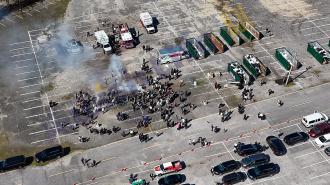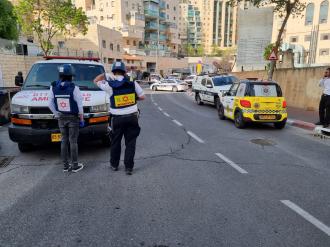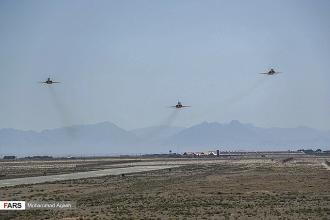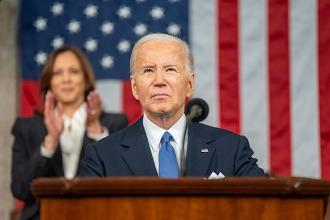The Latest on the faulty missile warning alert sent over the weekend by Hawaii's emergency management agency (all times local):
———
1:30 p.m.
The Federal Emergency Management Agency says the state of Hawaii didn't need federal approval to retract a cellphone alert mistakenly sent over the weekend warning of a ballistic missile attack.
FEMA said in a statement Monday that Hawaii has had the authority to cancel or retract warnings since 2012, when it applied for access to the Integrated Public Alert and Warning System.
Hawaii Emergency Management Agency spokesman Richard Rapoza says his agency asked FEMA for clarification on Saturday whether rescinding an alert was an appropriate use of the warning system.
Hawaii officials have said this process was one factor that delayed their retraction. It was not sent until 38 minutes after the initial alert.
Rapoza says officials weren't clear on whether they could use the system to cancel the first alert.
He says they didn't want to pile one mistake on top of another.
———
11:30 a.m.
Hawaii is the only state set up to send cellphone alerts about the threat of an incoming ballistic missile.
Hawaii Emergency Management Agency spokesman Richard Rapoza says the state has had the capability to send the alerts since November.
On Saturday, the agency mistakenly sent an alert to cellphones with a warning to seek immediate shelter because a ballistic missile was "inbound to Hawaii."
The agency followed up with a cellphone alert 38 minutes later saying the initial alert was a false alarm.
The agency posted a note on Twitter about the false alarm about 10 minutes after the initial alert.
But it took officials longer to work up and push out the false alarm alert to cellphones.
———
10:30 a.m.
A man suffered a massive heart attack minutes after the false missile alert in Hawaii.
The Honolulu Star-Advertiser reported Tuesday that Sean Shields, 51, started violently throwing up while at the beach on Oahu.
The newspaper says he then called his 10-year-old daughter and adult son to say goodbye. Then he drove himself and with his girlfriend to a health center where she says he collapsed in the waiting room.
Shields' girlfriend Brenda Reichel says medical staff performed CPR and transported the man to a hospital, where he had emergency surgery.
She says Shields had no previous heart problems.
———
9:20 a.m.
Homeland Security Secretary Kirstjen Nielsen says the agency will be working with states to follow proper protocols when issuing safety alerts and can quickly retract incorrect alerts like Hawaii's warning of a ballistic missile over the weekend.
Sen Mazie Hirono, D-Hawaii, says it's clear that human error initiated the false alert.
But she worries that system failures allowed it to go uncorrected for too long, nearly 40 minutes.
Hirono says "this had the potential for being totally catastrophic."
Nielsen told a Senate panel Tuesday the department had been unaware that Hawaii officials did not have a mechanism in place to address false alarms and retract them.
She also says the Department of Homeland Security is examining how the U.S. government can quickly verify the accuracy of alerts with agencies such as the Department of Defense.
———
8:50 a.m.
Gov. David Ige has appointed a state Army National Guard official to oversee a review of Hawaii's emergency management process after a faulty alert was sent to cellphones around the state warning of an incoming missile attack.
Ige appointed state Army National Guard Brig. Gen. Kenneth Hara on Monday.
The governor says Hara will provide a report in in two months.
Some changes have already been made, including requiring two people to approve emergency alerts.
Officials said a state employee clicked the wrong link and activated a real alert instead of an internal test.
There was no system for retracting the false alarm.















